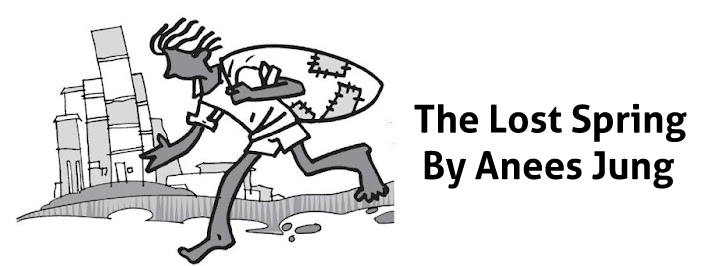Lost Spring Summary Class 12 EnglishIntroductionLost Spring is a story from the book Flamingo (Class 12th NCERT book) written by Anees Jung. The theme of the story is the lost childhood of the children who suffer from poverty which forces them to live a life of exploitation. The two different stories narrated by the author describe the poor state of street children who are forced into labour early in their lives instead of going to school. The biased behaviour of society adds to the suffering of these poor people. As we all know, spring is the season associated with optimism and hope. It also works as a metaphor for the childhood stage of our life. 
SummaryLost Spring is a story of the lost childhood of children suffering from extreme poverty that forces them to live a life of exploitation. Here, Spring is used as a metaphor that symbolizes the young age full of enthusiasm and hopes for a blooming future. But in contrast, the story describes the lives of poor children who could not enjoy their childhood and don't get proper education due to a lack of money and resources. First Story'Sometimes I find a Rupee in the garbage' The story begins with Saheb, a ragpicker who is looking for gold in the garbage. He left his home in Dhaka a long back. The author tells about how the poor children walk barefoot on the roads calling it a tradition, but instead, it might be an excuse to hide their poverty. She gets reminded of a story where a man from Udipi told her that he prayed for a pair of shoes, and thirty years later when the narrator visited the temple and the town, she could see a little boy walking in his shoes. Their prayers were answered. Saheb lives in Seemapuri, a place at the periphery of Delhi devoid of resources like sewage, drainage, or running water. Almost 10,000 ragpickers live here without any identity but a ration card. The author describes garbage as gold for the ragpickers because it provides a living for them, whereas it is a gift wrapped in wonders for children. After all, they sometimes find a coin or a ten-rupee note in it. The author talks about the two sides of society where a rich kid discarded a pair of shoes because of a hole in them, but Saheb does not mind wearing the same shoes with a hole in them. Later, the author sees Saheb working in a tea stall and is paid 800 rupees along with daily meals. He is carrying a steel canister. The author says that he has lost his carefree attitude and looks downcast. The author describes how the steel canister looked heavier than his plastic bag, which was his, and the steel canister is of the tea stall owner. Second Story"I want to drive a car" The story revolves around Mukesh, who belongs to a family of bangle makers in Firozabad, which is India's center of the glass-blowing industry. Mukesh wants to be a motor mechanic and learn to drive a car. The author describes the lives of traditional bangle-makers who work under harsh conditions with high temperatures, without proper light or air. Even though it is illegal for children to work under such conditions, 20,000 children still work under such conditions. Even after the family worked at the bangle factory, they remained poor. Mukesh's family still needed to build a proper house. The same is the fate of other people living in this area. The author also talks about the women who still had to follow old traditions of veiling their faces before the male elders. Mukesh's elder brother's wife was given charge of three males- her husband, Mukesh, and their father at a very young age. The author also describes how working under such conditions affects young children's eyesight making them blind at a very young age. Mukesh's grandmother has already accepted this lifestyle and calls it her husband's destiny to lose his eyesight. When asked to form a cooperative for better living conditions, they said they had a fear of being beaten by the police for doing something illegal. Therefore no one dares to change their line of profession of bangle-making, and from this tragic chain of poverty and suppression. Mukesh dreams of being a motor mechanic, and the author sees a flash of hope in his eyes. She asked him if he would like to be a pilot someday. Mukesh seemed embarrassed and said he was content dreaming of being a motor mechanic. Dreaming of a pilot seems beyond his reach. ConclusionThe conclusion of the summary is that there are two different stories of Saheb and Mukesh describing how their childhood have been taken away by the poverty, exploitation and burden of society but still they dream of being free and following their dreams one day. |
 For Videos Join Our Youtube Channel: Join Now
For Videos Join Our Youtube Channel: Join Now
Feedback
- Send your Feedback to [email protected]
Help Others, Please Share









